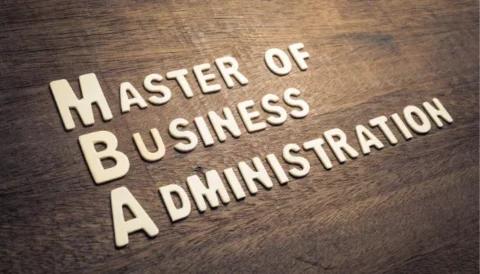The Fall Intake is one of the main enrollment periods for universities to study in the USA. For most MBA and other academic programs, the Fall Intake usually begins in August or September. This is when a new academic year starts, and most students join classes, participate in orientation programs, and start their courses with a full set of resources and activities available on campus. Pursuing an MBA abroad is a life-changing decision that offers global exposure, access to world-class faculty, and vast career opportunities. The USA, being home to top-ranked business schools like Harvard, Stanford, and Wharton, MBA study abroad in the USA remains one of the most preferred destinations for MBA aspirants. Without further ado Let’s dive into the journey of applying for Fall 2025 intake in the USA.
Why is Fall the Most Popular?
The Fall Intake usually begins in the month of August or September. The reasons that makes it the most favourable time and most preferable choice not only for the nationals ,for international as well are as follows :-
a) Higher Availability of Seats in Top MBA Programs
- Most top-ranked business schools, such as Harvard, Stanford, Wharton, and MIT Sloan, primarily offer admissions in the Fall.
- Fall Intake has larger class sizes, meaning better chances of securing a spot compared to Spring Intake, which has limited seats or may not be offered at all.
- More seats also mean greater diversity in the student batch, leading to better peer learning and networking opportunities.
b) Better Job Opportunities and Internships
- Fall Intake aligns with corporate hiring cycles, making it easier for students to secure internships and full-time jobs.
- Many summer internships (a key part of an MBA experience) are only available to Fall students, as companies recruit in the first year of the program.
- Recruiters prefer Fall students for placements, as their graduation aligns with recruitment timelines of top companies in consulting, finance, tech, and other industries.
c) Stronger Networking and Peer Learning
- Since Fall is the primary intake, students get access to larger alumni networks, career fairs, and business conferences.
- Business schools organize most of their networking events, leadership programs, and extracurricular activities in the Fall semester.
- A larger and more diverse student batch in the Fall means better collaboration opportunities with classmates from different industries and backgrounds.
d) More Financial Aid, Scholarships, and Assistantships
- Universities allocate most scholarships and financial aid in the Fall Intake, giving students better chances of securing funding.
- Fall students have a higher chance of getting graduate assistantships and teaching assistant roles, which help cover tuition costs.
- Early applicants for Fall can apply for merit-based scholarships that are limited or unavailable for Spring applicants.
e) Smoother Academic Transition and Campus Experience
- Fall Intake students start their MBA at the beginning of the academic year, ensuring a smooth transition into campus life.
- Orientation programs, student clubs, and leadership activities primarily start in the Fall, helping students settle in and network effectively.
- The weather is more favorable during Fall Intake, making it easier for international students to adjust to life in the USA compared to arriving in the middle of winter for Spring Intake.
When to apply for the Fall Intake and How
The application process for fall intake in the United States usually starts in late November or early December of the previous year. However, top universities may accept applications as early as January.
When to start preparing
- It’s recommended to start preparing your application 6–12 months in advance.
- You can start preparing work your junior year, such as:
- Taking the SAT
- Researching campuses
- Visiting campuses
- Getting recommendation letters
- Adding to your extracurriculars
What to consider
- The application deadline and process vary by university and program.
- You should complete the FAFSA (Free Application for Federal Student Aid) as soon as possible.
- You should secure necessary documents and prepare for standardized tests.
When does the fall intake start?
- The fall intake usually begins in August or September and runs through December or early January.
Eligibility Criteria for MBA in the USA
To apply for an MBA program in the USA, international students must meet the following requirements:
- Bachelor’s Degree: A four-year undergraduate degree (some universities may accept a three-year degree).
- Standardized Tests: GMAT or GRE scores are required by most universities. Some programs also accept Executive Assessment (EA) scores.
- English Language Proficiency:
- TOEFL: Minimum 90-100 (varies by university).
- IELTS: Minimum 6.5-7.5.
- PTE Academic: Some universities accept this alternative.
- Work Experience: Although not mandatory for all programs, most top B-schools prefer candidates with 2-5 years of work experience.
- Statement of Purpose (SOP): A well-written essay explaining career goals, why you want to pursue an MBA, and why the particular university is the best fit.
- Letters of Recommendation (LORs): Usually two to three letters from employers, professors, or mentors.
- Interview: Some universities conduct interviews as part of the selection process.
- Financial Proof: Evidence of funds to cover tuition and living expenses (bank statements, sponsorships, or loans).
USA Fall Intake 2025 Requirements
The following is the Fall intake timeline for the USA MBA application for the year 2025, check out all the details below for reference:
- Prepare for required standardised tests like GMAT, GRE, SAT, TOEFL, or IELTS – depending on the course and university.
- Start early and by May 2024, shortlist 8-12 universities that you will apply to. Visit university websites and note application requirements, deadlines etc.
- By June 2024, be familiar with bank loan options and scholarships to fund your studies.
- Begin by downloading admissions brochures from the university websites. Most brochures are out more than a year earlier.
- By June or three months before the test date, register for the GMAT / GRE.
- Do some initial research on various accommodation options.
- Register for TOEFL/IELTS at least a month before the test date.
- Take the required tests well before August / September 2024. Plan for buffer time in case you need to retake the test. Check test-taking and re-exam process and guidelines.
- Shortlist the colleges and prepare for your application. Think hard about what makes you unique as an applicant and sketch out your strengths and self-assessment.
- Contact your professors and direct managers for the required 2-3 reference letters. At least a month before your application deadline. Check the deadline timetable!
- Begin drafting your SOP and essays. Give a month to structure these documents properly.
- Apply before the deadline!
- Do not delay replying to college e-mails. And there will be quite a few!
- Appear for personal/video interviews. These are scheduled for around January to March 2025.
- Once you get acceptance letters, make your decision as soon as possible.
- Depending on the deadline, notify the universities of your decision.
- You will need to pay a non-refundable deposit to confirm your admission.
- Search for and begin applying for external scholarships (if applicable).
- Apply for a student loan, after you get your acceptance letter.
- Gather paperwork for your student visa. Check visa requirements.
- Apply for your student visa on time. Keep in mind the time taken for visa processing!
- Book airline tickets.
- Arrange for an International Debit/Credit card.
- Collect all the documents and their photocopies, to take along.
At a Glance : Different time periods and Duration of the Intakes
| Intake type | Start Date | Duration |
| Fall Intake | Late August/Sept 2025 | Sept-Dec 2025/Jan 2026 |
| Spring Intake | January 2025 | Jan-May 2025 |
| Summer Intake | May 2025 | May-August 2025 |
Tips to Successfully Enroll in the Fall 2025 MBA Intake in the USA
If you want to strengthen your MBA application and secure admission in the Fall 2025 intake, follow these key steps:
1. Start Early and Plan Strategically
- Research universities and shortlist them based on specialization, ranking, job placement, and ROI.
- Check the application deadlines (Round 1 is the most preferred).
- Understand eligibility criteria such as GMAT/GRE scores, TOEFL/IELTS requirements, and work experience.
2. Excel in GMAT/GRE and English Proficiency Tests
- Target a competitive GMAT/GRE score (700+ for top MBA programs).
- Prepare for TOEFL/IELTS to meet language requirements (TOEFL 100+ or IELTS 7.0+ for most universities).
3. Craft a Standout Statement of Purpose (SOP) & Essays
- Focus on career goals, leadership experiences, and unique strengths.
- Address why you chose that MBA program and how it aligns with your aspirations.
4. Build a Strong Resume & Work Experience Profile
- Highlight managerial roles, leadership skills, and impact-driven achievements.
- Showcase involvement in extracurricular activities, volunteering, and projects.
5. Secure Strong Letters of Recommendation (LORs)
- Choose recommenders who know you well (professors, managers, or mentors).
- Ensure LORs reflect your skills, leadership, and work ethic.
6. Prepare for MBA Interviews
- Research common interview questions and practice mock interviews.
- Be ready to discuss career goals, why an MBA, and leadership experiences.
7. Financial Planning & Scholarship Applications
- Explore MBA scholarships, fellowships, and financial aid options.
- Prepare a solid financial plan covering tuition fees, living expenses, and visa costs
MBA Application Deadlines of Top Business Schools for 2024-2025
USA MBA Application Deadlines for Top Business Schools:
| Business School | Round 1 | Round 2 | Round 3 |
| Harvard Business School | 04-September-2024 | 06-January-2025 | NA |
| Wharton | 04-September-2024 | 03-January-2025 | 02-April-2025 |
| Michigan Ross | 09-September-2024 | 06-January-2025 | 24-March-2025 |
| Stanford GSB | 10-September-2024 | 08-January-2025 | 08-April-2025 |
| Columbia Business School | 10-September-2024 | 07-January-2025 | 01-April-2025 |
| Yale SOM | 10-September-2024 | 07-January-2025 | 08-April-2025 |
| Northwestern Kellogg | 11-September-2024 | 08-January-2025 | 02-April-2025 |
| UC Berkeley Haas | 12-September-2024 | 09-January-2025 | 03-April-2025 |
| NYU Stern | 16-September-2024 | 16-October-2024 | 16-January-2025 |
| Cornell Johnson | 18-September-2024 | 09-January-2025 | 10-April-2025 |
Also read : Top 20 Study Abroad Consultants in Dehradun.
Conclusion
Securing admission for Fall 2025 Intake in the USA for MBA intake requires careful planning, early preparation, and a strong academic and professional profile. From achieving a competitive GMAT/GRE score to crafting a compelling SOP and excelling in interviews, every step in the application process is crucial. By staying organized, adhering to deadlines, and seeking financial aid opportunities, you can enhance your chances of getting admitted to a top-tier business school in the USA. Start your preparation today, remain persistent, and take the next step toward achieving your MBA dreams!
FAQs:
1. When should I start preparing for Fall 2025 MBA applications?
Start at least 9–12 months in advance. Prepare for GMAT/GRE (March–June 2024), work on SOP & LORs by July–August, and apply in Round 1 (Sept–Oct 2024) for the best chances.
2. Is Round 1 better than Round 2 for MBA applications?
Yes, Round 1 has more seats, better scholarships, and a higher acceptance rate. Round 2 (Dec–Jan) is still good, but Round 3 (March–April) is highly competitive with fewer seats.
3. What makes a strong Statement of Purpose (SOP) for an MBA application?
A strong SOP should be clear, concise, and goal-oriented, highlighting career aspirations, leadership skills, and why the chosen MBA program is a perfect fit.
4. How can I improve my MBA profile if I have a low GMAT/GRE score?
Strengthen your essays, LORs, and work experience, apply to GMAT-waiver schools, take business-related courses, or retake the GMAT/GRE if possible.
5. What financial aid options are available for international MBA students?
Options include merit-based scholarships, need-based aid, external scholarships (e.g., Fulbright), graduate assistantships, and education loans.





